A Broker's Life
Michael Hallett • October 27, 2015

What you think I do and What I really do!
The primary purpose for producing this piece was to try and demystify the job of a Mortgage Broker. By now everybody that has a mortgage has heard about Mortgage Brokers. Whether they have decided to use the services of one is a completely different topic all together. Having said that, the market share of borrowers 'using their banks' still swings in their favour at a staggering 70%. I'm excited to be part of the push for equal or greater market share...but let's get back to the topic at hand.
This idea came to me while I was speaking to a colleague of mine about a recent file she was working on. It was a difficult one with multiple layers and barriers to mitigate before a lender would accept it. In the end, she got the 'file complete' status that we as Brokers all seek. At the end of the process the client was very grateful, but admittedly said that he was really unsure what she as a Mortgage Broker really does. This is where the idea was born.
What Do You Think I Do?
Here's what a quick Facebook poll unveiled after posing this question, In my quest to write fun and sometimes 'different' mortgage content for my blog I want to ask my NON-mortgage broker friends on Facebook a simple question. What do you think I do? Everybody has a different opinion of what Brokers really do. I knew there would be some fun jabs, but here is what was sourced.
- You lay with your feet up on the couch watching sports all day...answering the phone when it rings.
- You sit around, drink coffee, wait for the files to roll in then hit the pub for afternoon drinks...
- Laundry, cleaning, cooking, napping
- Match potential homebuyers with the mortgage product that best fits their needs. And you do this by knowing what your customers wants/needs are and being aware of what programs are available and which company offers them.
- A fellow broker replied with an image, which I felt was very appropriate. It was the Dos Equis XXX actor with a caption that read "I don't always make it rain, but when I do, it's usually rolls of quarters." Some friends think I sell cash.
- Broker on Wall Street juggling multiple phones on-the-go!
Further to the crowd-based outsourcing, I also found another image online that made me chuckle and thought it was appropriate for this piece as well. I summarized the image into 4 points below. As individuals we all have our own sphere, people that we look up to and depend on, whether it's for advice or friendship. All of those individuals have opinions. And the more I thought about the graphic I found, the more it made sense as I've had these very conversations with these people in my life as to what I do.
- My friends think all I do is go from one party to the next trying to drum up business.
- My mom still thinks I work on cases (no, I'm not a lawyer) sitting in a boardroom having cerebral conversations with other high level executives.
- The general public thinks I am a slippery car salesman wearing 70s clothes and a pinky ring while dangling a cigar from my month.
- My clients (might) think that all I do each day is sit back and calculate my future commission cheques.
What I Really Do!
Mortgage Brokering is the career path I chose six years ago. At the time I made the decision to pursue Brokering I thought it was a job. I know now that is an incorrect statement, it's a lifestyle that I live. It's not a regular 9AM-5PM-Monday-to-Friday-with-5-weeks-of-vacation-and-employer-double-up-RRSP-contributions-a-year-job. It's much more complex than that. For starters, I have to be 'on' and engaging all the time. I don't power down because the moment I do I could miss an opportunity and opportunities don't always come around in the same shape. I have a duty to my next client to be:
- up-to-date on all the current real estate market data,
- changing lender interest rates (and why),
- economic influencers that trigger the market,
- constantly changing lender guidelines,
- know how to structure a file when it lands on my desk, quickly and efficiently.
Right now I'm fairly certain that all my Broker friends are nodding their heads agreeing with me.
Creating an exceptional experience for that one client could mean one or more referrals from that very client in the future. A referral is the ultimate testimonial. Each client is treated like they are the only one I am working with at that present time.
As Mortgage Brokers we all operate our business differently. I have chosen a business model where most of my business flows from professional referral sources; accountants, financial planners, lawyers, Realtors, bank representatives, property managers, stock brokers, developers, professional recruiters, home insurance providers, commercial brokers and so on. These professionals are key to my success as I have positioned myself as a resource. One that can assist with every aspect of a mortgage transaction and beyond. I am able to connect people. They are all people I share a common thread with - we KNOW, LIKE and TRUST one another. This is the basis for a natural flow of referrals. You're likely asking yourself, why am I bringing this up. The answer is because this is what 'I DO.' I get to know the people I work with on a personal level to form a friendship. If there is no friendship, just personal monetary gain, then there will not be a long lasting business relationship. I have seen a couple of referral sources come and go over the years where personal gain was the only thing top of mind for the other party, needless to say we are not working together anymore. The act of getting to know someone is quite simple, just ask questions then sit back and listen. Then take that information and store it, I guarantee you it will become very handy in the future.
An exceptional Mortgage Broker is also an exceptional story teller. All my clients have their own unique individual story and it's up to me to tell that story to the audience - the potential lender we are pursuing. The ultimate goal throughout the application process is simple, minimize the stress level of the borrower and complete the task quickly with comprehensive updates along the way. This is done by structuring the file accordingly, providing detail. I must admit I've got the process dialed. It's so good, that I have quite honestly surprised myself a few times on a few difficult files. I put a lot of pressure on myself to tell a seamless story.
Providing an abundance of detail helps to break down the barriers of entry, this being access to the lenders financing. My goal at the start of the application process is to receive an approval without receiving a call or an email from the lenders underwriter. When I accomplish that, then I have done my job successfully. It's quite simply the easiest part of the process. All I have to do is answer questions about the property, income source, down payment source and credit history - just 4 things!
All lenders have a different appetite for risk, knowing how to mitigate and answer those risk questions is all part of managing this business. Once this is all tabulated then the financing is guaranteed, right? One would assume (never assume...you know the rhyme) that 'a mortgage is a mortgage,' WRONG! Every mortgage file is different. In my short 6 year tenure, I've never seen one file that is exactly the same as a previous one. There are definitely elements of one that might be similar, but this business does not have a template. The round hole, square peg scenario happens a lot in this business. It's up to me to shave down the edges of the square peg to squeeze it into the round hole. There are definitely ones that come together easier than others, but there are also files that consume my day, even multiple days. Again, I can sense my Broker friends nodding their heads.
The most important role 'I do' through the application process is to assume the position of an Educator. I entered this business knowing that I wanted to learn from my mistakes in the past. As a first time mortgage consumer I had relied on my bank to advise me accordingly and to educate me and to help me make the right decision. Instead I got what would work best for the banks shareholders. Knowing what I know now I don't think they did their job. I should have done my own research and ask the right questions. I learned the hard way. From day 1 (August 30, 2009) I vowed to provide as much information to my clients as needed to help them make an informed and educated decision. One that would benefit them and their family, not the lender. Knowing that my clients are advised correctly provides me the confidence in knowing they will instruct me on the path they would like to follow.
Processing mortgage files is just a half of what I do. Of course the other side is marketing. How does the rhyme go? - 'you gotta spend money to make money.' To generate business or potential clients I have to get out and meet with as many people as possible and let them know what I do. I try to attend as many networking events as a I possibly can. Heck, I even attend industry functions and conferences as you never know when a Broker-to-Broker conversation will lead to placing the 'next' file or an unforeseen opportunity. The glamorous life of a broker also involves endless coffee meetings and luncheons along with relentless periods of time spent on the phone with clients and lenders. I am constantly building the fortress around me. I have made a conscious effort to always utilize the same suppliers; lender(s), lawyer, appraiser. By maintaining focus on a select few it sometimes can pay in spades. At times this business presents strict or short timelines where having a solid relationship is key. If I need to place a rush on a file or ask for an exception or need some legal advice I know I have someone that I can rely on. If not, these calls usually end with 'sorry I'm too busy..' or 'who is this..' or a flat out 'no.' It's not what you know, but who you know in this small world of Brokering. Building solid reliable relationships is vital for survival is this business.
So, what do I do as a Mortgage Broker?
I strive to build long lasting relationships with my referral partners, clients and providers. I structure intricate applications by telling detailed stories about ones past, present and future. I am dedicated to providing the best options to fit one's current lifestyle and future long term goals through education. I share ideas and experiences about my mortgage practice, what has worked and what has not. I am continuously planting seeds like a farmer, never knowing when I will be called on. I work for the client, not the lender. What do I really do?
I am a connector! I connect my clients with the correct financing as well as connecting them with other real estate related professionals.
SHARE
MY INSTAGRAM
Mortgage Brokering meets mountain biking and craft beer. A couple months ago I set for a bike ride with the intention of answering few mortgage related questions, mission accomplished. Any good bike ride pairs nicely with a tasty beer which we enjoyed @parksidebrewery. Hope you see the passion I have for brokering, biking and beer. @torcabikes #mountainbikingmortgagebroker
TEASER alert...at thats what I think they call it in the business. Years ago a wrote a blog called BEERS BIKES AND MORTGAGES. I some how (in my head) blended all 3 topics into 1 blog. Simply put, I enjoy aspects of all 3 with each of them providing something different. I re-united with the talented Regan Payne on a project that I think will shed a bit more light on who I am and what I do. #craftbeer #mountainbike #mortgagebrokerbc #dlccanadainc
I saw this hat on Instagram, that very moment I knew I needed it. As a BC boy born and bred The Outdoorsman hat needed to be added to my collection. As someone who loves BC and most things outdoor, I’m now glad I have a cool hat to wear and fly the flag of BEAUTIFUL BRITISH COLUMBIA. It will be in my bag for all post-exploration celebratory cold pints. If you want to check them out or add one to your collection go to @nineoclockgun ...and yes my facial hair matches the hat as well.
View more

What Is a Second Mortgage, Really? (It’s Not What Most People Think) If you’ve heard the term “second mortgage” and assumed it refers to the next mortgage you take out after your first one ends, you’re not alone. It’s a common misconception—but the reality is a bit different. A second mortgage isn’t about the order of mortgages over time. It’s actually about the number of loans secured against a single property —at the same time. So, What Exactly Is a Second Mortgage? When you first buy a home, your mortgage is registered on the property in first position . This simply means your lender has the primary legal claim to your property if you ever sell it or default. A second mortgage is another loan that’s added on top of your existing mortgage. It’s registered in second position , meaning the lender only gets paid out after the first mortgage is settled. If you sell your home, any proceeds go toward paying off the first mortgage first, then the second one, and any remaining equity is yours. It’s important to note: You still keep your original mortgage and keep making payments on it —the second mortgage is an entirely separate agreement layered on top. Why Would Anyone Take Out a Second Mortgage? There are a few good reasons homeowners choose this route: You want to tap into your home equity without refinancing your existing mortgage. Your current mortgage has great terms (like a low interest rate), and breaking it would trigger hefty penalties. You need access to funds quickly , and a second mortgage is faster and more flexible than refinancing. One common use? Debt consolidation . If you’re juggling high-interest credit card or personal loan debt, a second mortgage can help reduce your overall interest costs and improve monthly cash flow. Is a Second Mortgage Right for You? A second mortgage can be a smart solution in the right situation—but it’s not always the best move. It depends on your current mortgage terms, your equity, and your financial goals. If you’re curious about how a second mortgage could work for your situation—or if you’re considering your options to improve cash flow or access equity—let’s talk. I’d be happy to walk you through it and help you explore the right path forward. Reach out anytime—we’ll figure it out together.

Wondering If Now’s the Right Time to Buy a Home? Start With These Questions Instead. Whether you're looking to buy your first home, move into something bigger, downsize, or find that perfect place to retire, it’s normal to feel unsure—especially with all the noise in the news about the economy and the housing market. The truth is, even in the most stable times, predicting the “perfect” time to buy a home is incredibly hard. The market will always have its ups and downs, and the headlines will never give you the full story. So instead of trying to time the market, here’s a different approach: Focus on your personal readiness—because that’s what truly matters. Here are some key questions to reflect on that can help bring clarity: Would owning a home right now put me in a stronger financial position in the long run? Can I comfortably afford a mortgage while maintaining the lifestyle I want? Is my job or income stable enough to support a new home? Do I have enough saved for a down payment, closing costs, and a little buffer? How long do I plan to stay in the property? If I had to sell earlier than planned, would I be financially okay? Will buying a home now support my long-term goals? Am I ready because I want to buy, or because I feel pressure to act quickly? Am I hesitating because of market fears, or do I have legitimate concerns? These are personal questions, not market ones—and that’s the point. The economy might change tomorrow, but your answers today can guide you toward a decision that actually fits your life. Here’s How I Can Help Buying a home doesn’t have to be stressful when you have a plan and someone to guide you through it. If you want to explore your options, talk through your goals, or just get a better sense of what’s possible, I’m here to help. The best place to start? A mortgage pre-approval . It’s free, it doesn’t lock you into anything, and it gives you a clear picture of what you can afford—so you can move forward with confidence, whether that means buying now or waiting. You don’t have to figure this out alone. If you’re curious, let’s talk. Together, we can map out a homebuying plan that works for you.










































































































